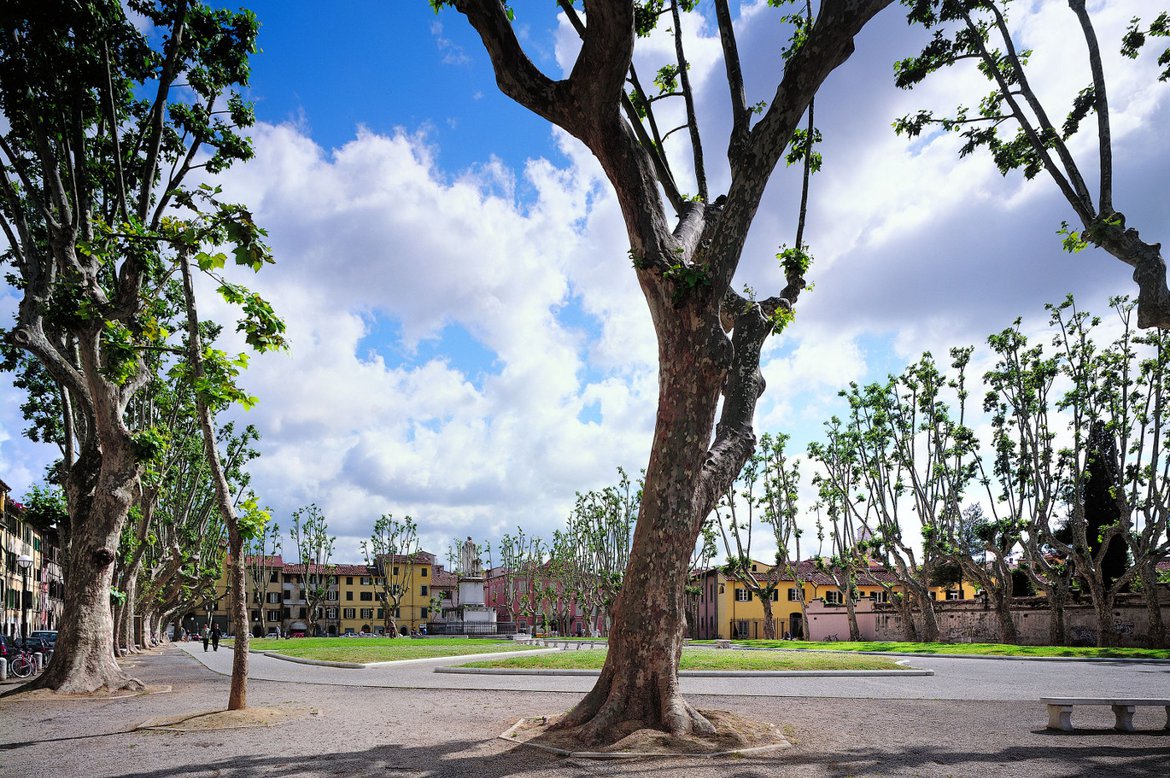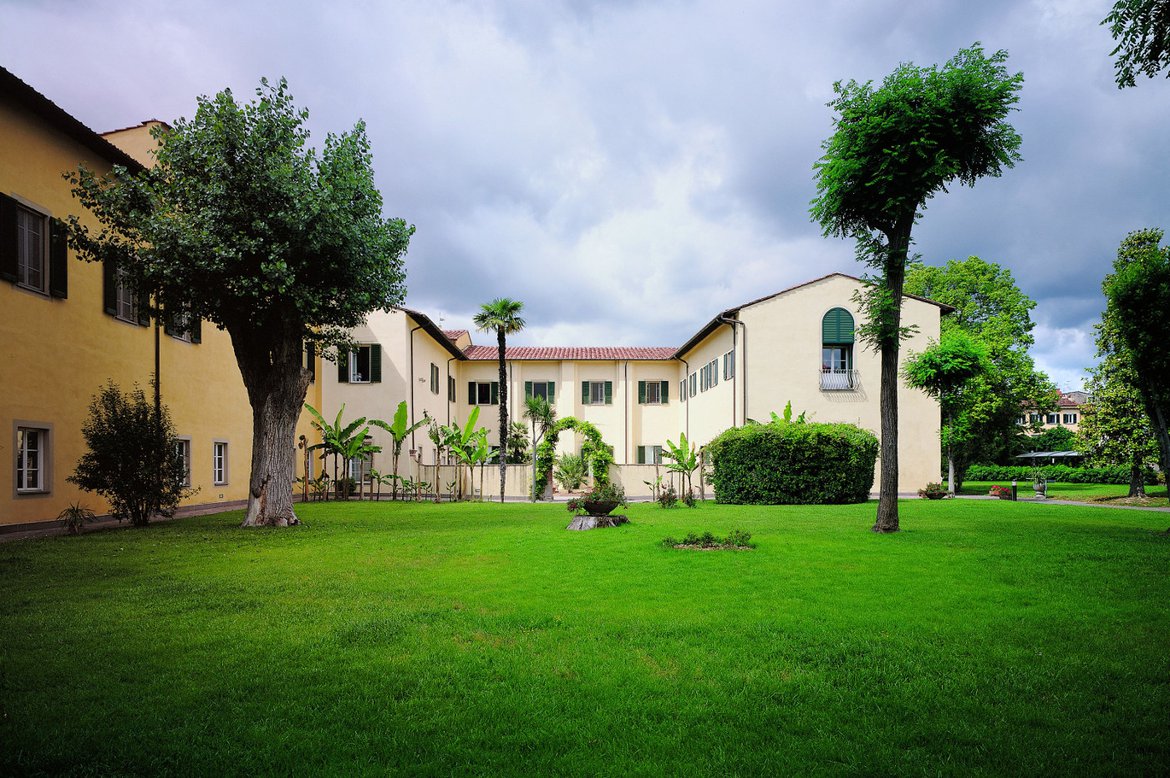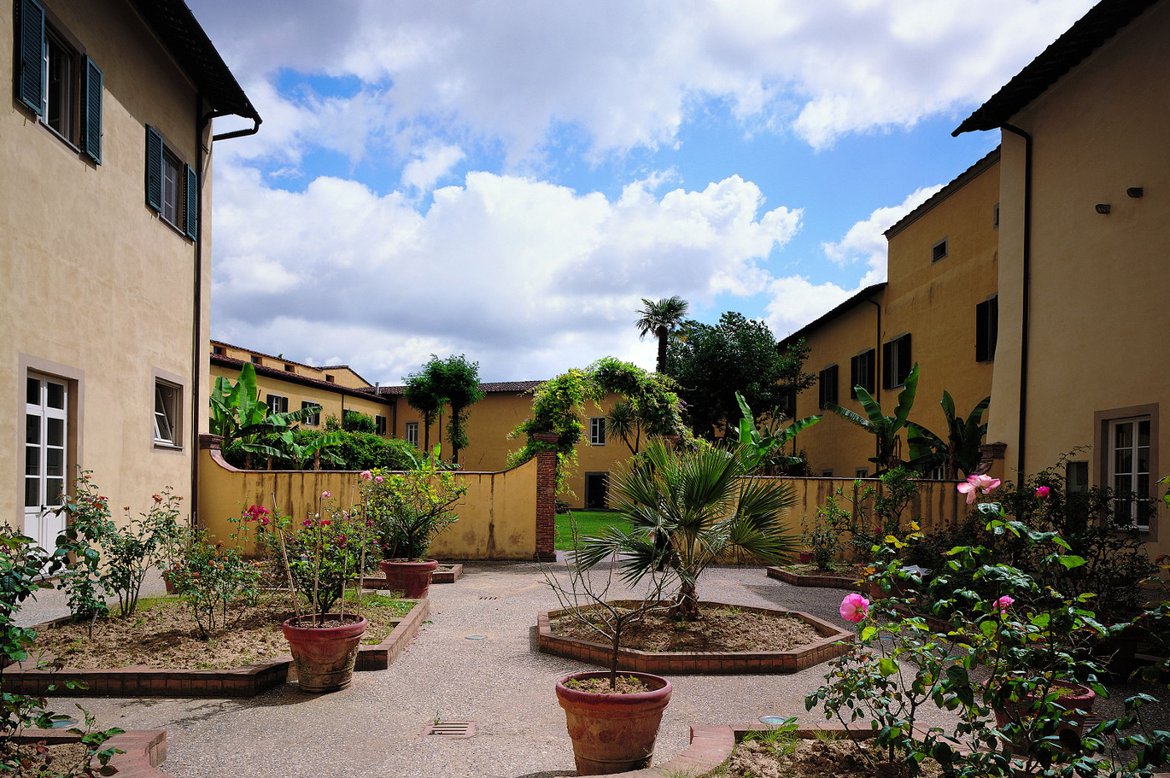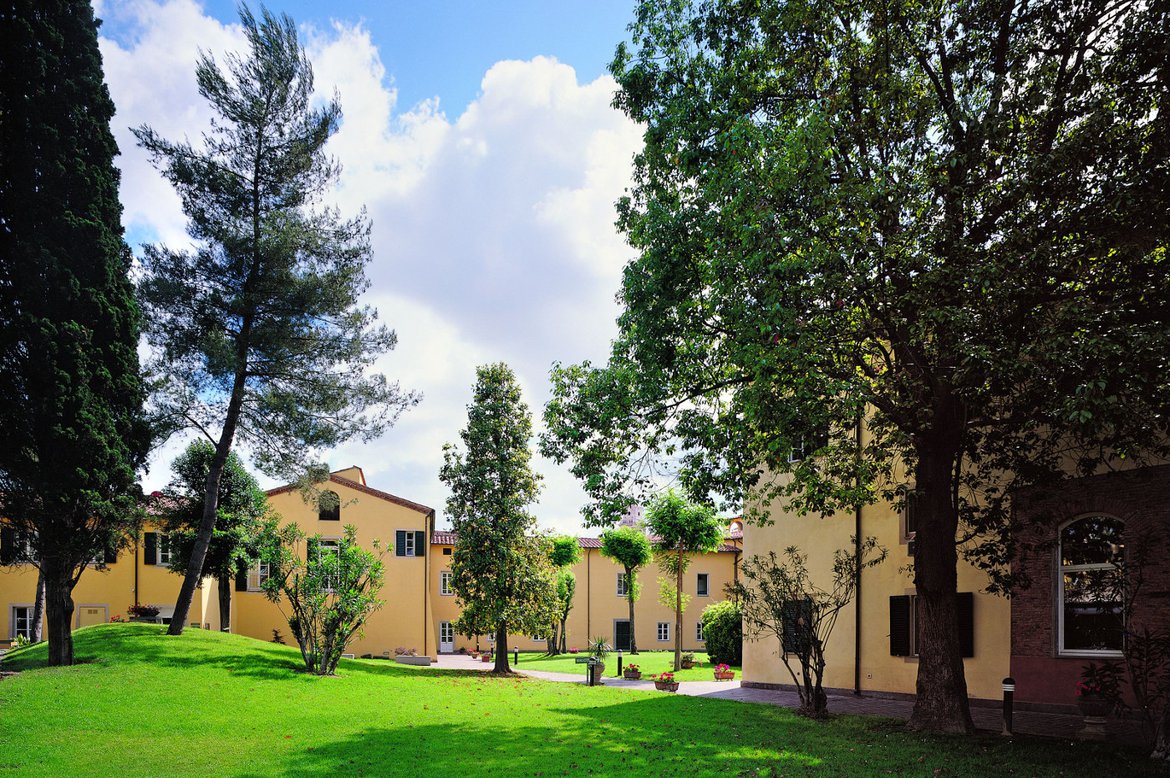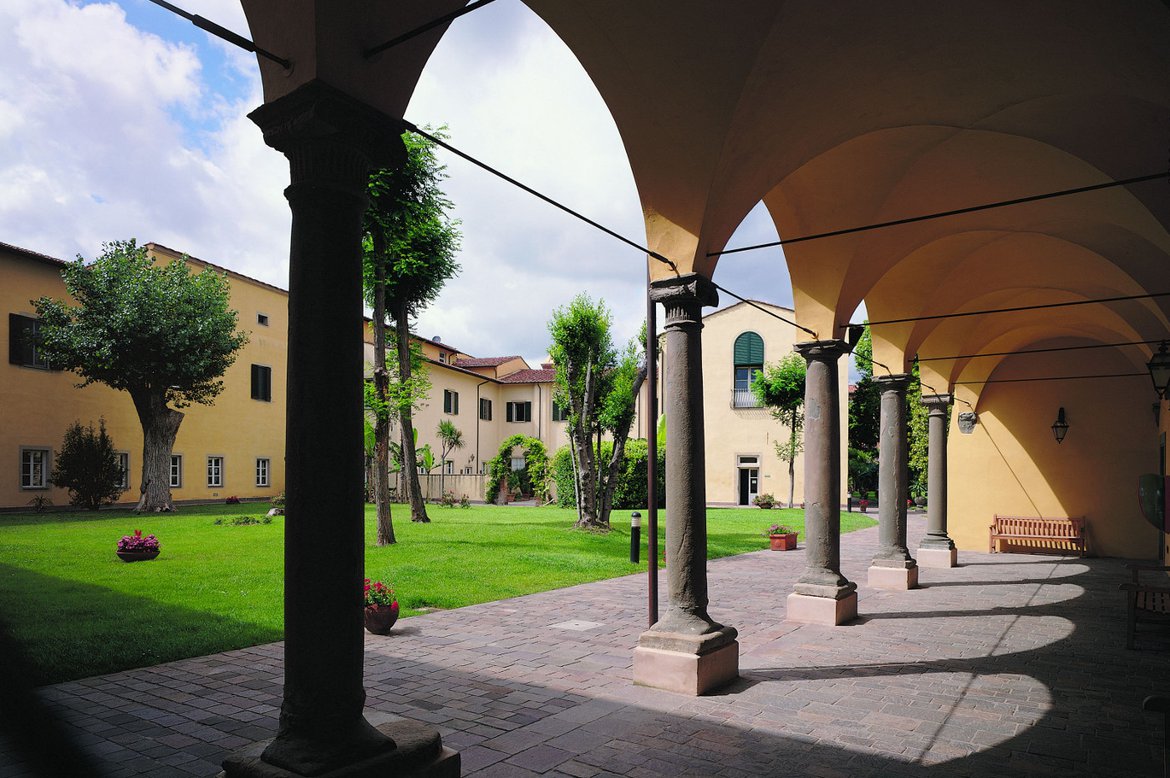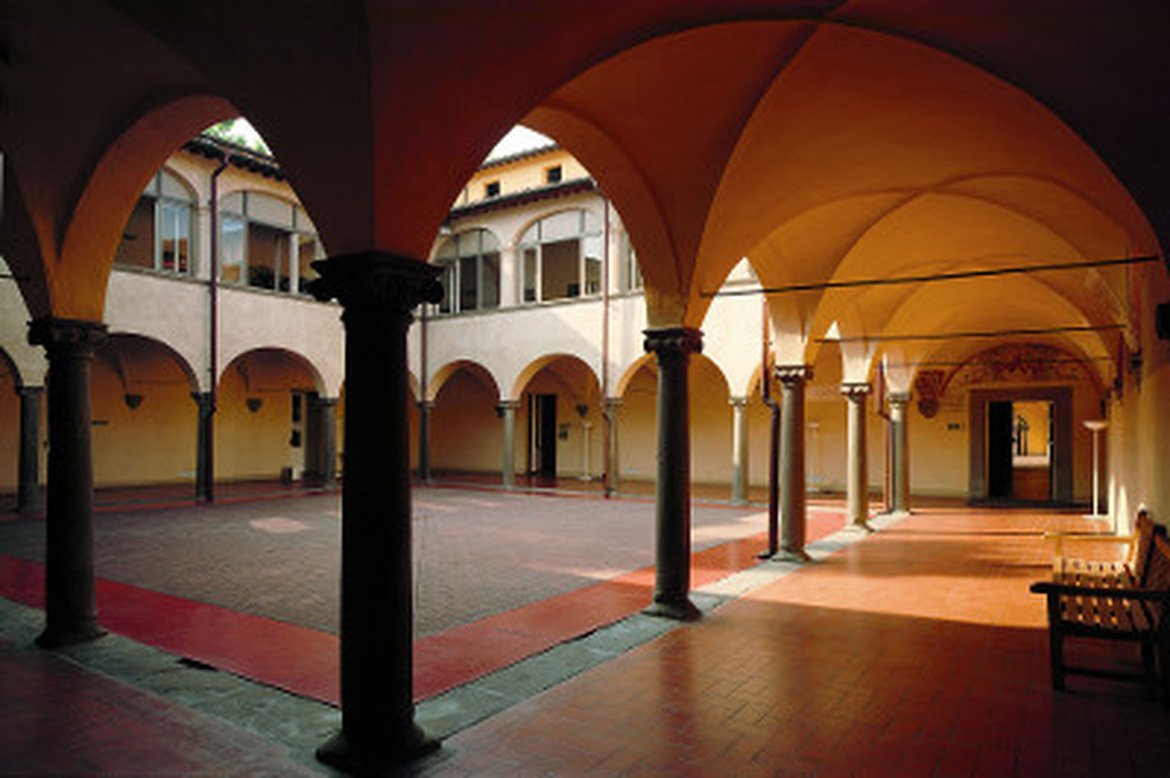4th HBP Student Conference on Interdisciplinary Brain Research
21-22 January 2020 | Pisa, Italy
Click on the button below to access the Conference Media Section.
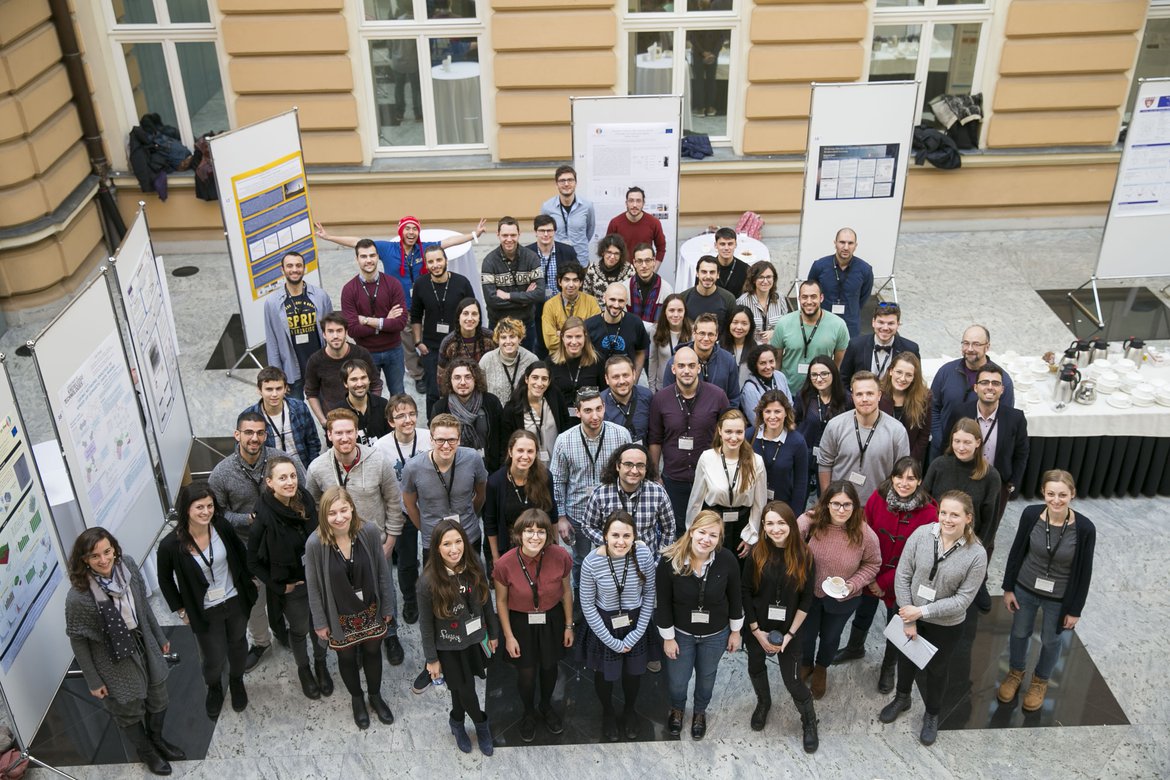
FAQs & ALL YOU NEED TO KNOW
- Admission to all scientific sessions
- Conference material
- Coffee breaks during the conference
The fee does not include travel and accommodation.
The conference will start on Tuesday 21 January 2020 in the morning with registration and will end the evening of Wednesday 22 January 2020. The programme comprises keynote lectures, student sessions, poster sessions as well as social events.
Participants can sign up for a guided city tour on the evening of 22 January via the conference registration system.
The Workshop Day on 23 January will last all day (approx. 8:30-17:30), with various half-day parallel sessions participants can choose from.
Registration fee waivers were available for a limited number of participants who successfuly submitted an abstract for presentation. Participants could apply for fee waivers prior to the abstract submission deadline.
Pisa is easily accessible by air, train, bus or car. Detailed information can be found on the “Visit Pisa” website.
- Pisa by plane
Pisa has an airport: Aeroporto Internazionale Galileo Galilei Pisa or you can also fly to Florence: Aeroporto Amerigo Vespucci. For further information, have a look at the Pisa Airport or Florence Airport website.
2. Pisa by car
If you decide to come by car, you will find Pisa at the crossroads of two large motorways:
A12/E80 connecting Nice, Geneve, Bern, Barcelona
A11/E76 connecting Florence, Ljubljana, Vienna, Zagreb, Munich, Bratislava, Budapest
3. Pisa by train
The main railway station in Pisa is:
- Stazione Ferroviaria Pisa Centrale.
There is also a connection between Pisa airport and Pisa main railway station, the Pisa Mover.
If you are planning to travel by train frequently, the following tickets provide for a cheaper journey:
More information on train tickets can be found on the website of the Trenitalia or Italiarail.
For international connections by bus, train or air visit Omio.
Further information about traveling to Pisa and other useful information can be found on the “Visit Pisa” website.
In order to get to the venue you can take the bus No. 2 or 4 from the main station and get off at the station S.Lorenzo. From there it only takes you 2 minutes to the venue.
Ho(s)tels or Youth hostel:
– You can visit the website of the City of Pisa to find a hotel: Visit Pisa
– Affordable lodging: www.hostelpisa.it or www.german.hostelworld.com/Jugendherbergen/Pisa/Italien
Bed & Breakfast:
– Visit the website of Bed & Breakfast possibilities: www.bed-and-breakfast.it/mobile/de/pisa or www.booking.com
In Italy there are a lot of Bed & Breakfast possibilities also with a very high and exclusive standard!
Hotels: (prices for single rooms)
Category 2* Hotel Moderno from € 33
Hotel Milano from € 45
Category 3* Hotel Minerva from € 60
Royal Victoria Hotel from € 56
Category 4* NH Pisa from € 67
Grand Hotel Duomo from € 61
- Language
The official language spoken in Italy is Italian. Pisa is located in the province of Tuscany. The most common foreign languages in Italy are German and English.
- Time zone
Pisa is located in the Central European Time Zone (CET = GMT+1).
- Currency, credit cards, banking
The official currency in Italy is the EURO (EUR, €). The most common international credit cards (such as Mastercard or Visa) as well as debit cards (Maestro) are generally accepted in Pisa. ATMs are available throughout the city.
Tipping is not common in Italy. Restaurant, taxi and hairdresser bills include the service charge. However, if you are very happy with the service you got, leaving a few Euros (or to round up your bill) as a tip is the way forward, but think of 10 % as the maximum to leave (i.e. when you receive exceptional service).
- Climate
In Italy the climate is mediterranean with its hot, dry summers and cool, wet winters. The average temperature in January in Pisa is between 2 and 11 °C (35 and 52 °F).
- Electric current
In Italy you find power plugs and sockets of type F and L. The standard voltage is 230 V and the standard frequency is 50 Hz.
- Tap water
Tap water should be safe to drink in Italy.
Please note that the information provided on this site has been obtained from several different sources and therefore the organisers cannot accept any responsibility for errors therein.
|
Combine the Student Conference with a hands-on workshop day! The workshop day on 23 January was dedicated to hands-on project work on various tools and services developed in the HBP. Attendees of the Student Conference were invited to participate in the workshop day free of charge.
|
SCIENTIFIC PROGRAMME
Download the preliminary scientific programme:
![]() 4th HBP Student Conference Preliminary programme (1.7 MB)
4th HBP Student Conference Preliminary programme (1.7 MB)
Tuesday | 21 January 2020
Wednesday | 22 January 2020
08:00 - 08:30
Registration
08:30 - 09:00
Welcome note & introduction
Egidio Falotico (Scuola Superiore Sant'Anna)
Sandra Diaz (Forschungszentrum Jülich)
Gabriel Urbain (Ghent University)
09:00 - 10:00
ilastik: Automating image analysis with machine learning
Dominik Kutra (The European Molecular Biology Laboratory)
The virtual epileptic patient (VEP) - taking neuroscience to clinical trials
Huifang Wang (Aix-Marseille University)
10:00 - 11:00
The SpiNNaker Platform
Andrew Rowley (University of Manchester)
Ethics in the neurosciences
Dieter Sturma (Forschungszentrum Jülich)
11:00 - 11:30
Coffee break
Coffee break
11:30 - 12:30
Student Session I -
Systems & cognitive neuroscience
Student Session III -
Neuroinformatics & brain simulation
12:30 - 13:30
Lunch break
Lunch break
13:30 - 14:30
From the origins of M/EEG signals to the study of time-resolved brain mapping
Julia Guiomar Niso Galán (Universidad Politécnica de Madrid)
Mean-field models derived from biologically realistic neuronal dynamics
Tilo Schwalger (TU Berlin)
14:30 - 15:30
Student Session II -
Human brain organisation
Student Session IV -
Ethics, cognition & neuromorphic computing
15:30 - 16:00
Coffee break
Coffee break
16:00 - 17:00
Computational models for sensory feedback in upper limb neuroprostheses
Alberto Mazzoni (Scuola Superiore Sant'Anna)
Reconstruction and simulation of the cerebellar microcircuit
Claudia Casellato (University of Pavia)
17:00 - 18:30
Posters & Coffee
Posters & Coffee | Closing session
18:30
Welcome Reception
City tour (optional upon registration)
CONFIRMED SPEAKERS

Claudia Casellato obtained a PhD degree in Bioengineering in 2011 at the Politecnico di Milano. She spent several time abroad for education (International program ERASMUS/SOCRATES at the Norwegian University of Science and Technology) and for research collaborations (Université de Bourgogne, Dijon, France; CITIC-University of Granada, Spain). She worked as a post-doc fellow at NeuroEngineering and medicAl Robotics Lab, of the Dept. of Electronics, Information and Bioengineering, at the Politecnico di Milano. She joined, as co-investigator, EU grants MUNDUS (ICT) and REALNET (FET Proactive), international research projects on Space Human Physiology funded by the Space Agencies (Italian, European and NASA), clinical funded by NIH. She currently works as Assistant Professor at the Dept. of Brain and Behavioral Sciences of the University of Pavia, working in the EU Flagship Human Brain Project (HBP Horizon 2020 Framework Programme for Research and Innovation).
Her research interests and activities have been and are oriented to deal with the fascinating topic of “human motor learning”, by tackling the issue both through a macroscopic approach, i.e. experimental set-up and protocols able to detect and interfere with the learning process in physio and pathological conditions, and through a microscopic approach, i.e. computational neural models embedded in behavioral loops, able to let emerge high-level functions from elementary neural features and circuit mechanisms, in physio- and pathological conditions as well.
Lecture title: Reconstruction and simulation of the cerebellar microcircuit
Computational models allow propagating microscopic phenomena into large-scale networks and inferencing causal relationships across scales. Here we reconstruct the cerebellar circuit by bottom-up modelling, reproducing the peculiar properties of this structure, which shows a quasi-crystalline geometrical organisation well defined by convergence/divergence ratios of neuronal connections and by the anisotropic 3D orientation of dendritic and axonal processes [D'Angelo et al, Front Cell Neurosci. 2016].
Therefore, a cerebellum scaffold model has been developed and tested. It maintains scalability and can be flexibly handled to incorporate neuronal properties on multiple scales of complexity. The cerebellar scaffold includes the canonical neuron types: Granular cell, Golgi cell, Purkinje cell, Stellate and Basket cells, Deep Cerebellar Nuclei cell. Placement was based on density and encumbrance values; connectivity on specific geometry of dendritic and axonal fields, and on distance-based probability.
In the first release, spiking point-neuron models based on Integrate&Fire dynamics with exponential synapses were used. The network was run in the neural simulator pyNEST. Complex spatiotemporal patterns of activity, similar to those observed in vivo, emerged [Casali et al, Front Neuroinf. 2019]. For a second release of the microcircuit model, an extension of the generalised Leaky Integrate&Fire model has been developed, optimised for each cerebellar neuron type and inserted into the built scaffold [Geminiani et al, Front Comp Neurosci. 2019]. It could reproduce a rich variety of electroresponsive patterns with a single set of optimal parameters.
Complex single neuron dynamics and local connectome are key elements for cerebellar functioning.
Then, point-neurons have been replaced by detailed 3D multi-compartment neuron models. The network was run in the neural simulator pyNEURON. Further properties emerged, strictly linked to the morphology and the specific properties of each compartment.
This multiscale tool with different levels of realism has the potential to summarise in a comprehensive way the electrophysiological intrinsic neural properties that drive network dynamics and high-level behaviours.
The model, equipped with ad-hoc plasticity rules, has been embedded in a sensorimotor loop of EyeBlink Classical Conditioning. The network output evolved along repetitions of the task, therefore letting emerge three fundamental operations ascribed to the cerebellum: prediction, timing and learning of motor commands.
Dominik Kutra is a scientific software developer in the group of Anna Kreshuk in EMBL, Heidelberg, working on ilastik - the interactive learning and segmentation toolkit. Before joining the ilastik development team in 2017, he worked as a scientist on medical image processing related topics at Philips Research in Hamburg.
Lecture title: ilastik: Automating image analysis with machine learning
ilastik is a popular tool for interactive segmentation, classification and tracking. It was developed in order to make machine learning based image analysis accessible: Using it requires no experience in image processing. In ilastik, the user interactively trains a classifier by annotating examples. In this talk I will give an overview of the fundamentals ilastik was built upon, as well as an outlook on the current and future developments at the Kreshuk Group. Furthermore I will focus on ilastik workflows that are most applicable for the HBP users and present how ilastik is used in the HBP.
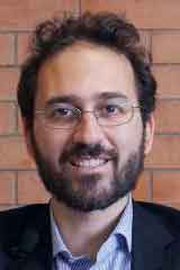 Dr. Alberto Mazzoni is Assistant Professor of BioEngineering at the Scuola Superiore Sant’Anna (SSSA), and Principal Investigator of the Computational Neuroengineering Laboratory in The Biorobotics Institute of SSSA. He was born in Florence in 1978. He received a magna cum laude degree in Theoretical Physics at Pisa University in 2002 with a thesis on modelling of neuronal interactions. He received the PhD in Neuroscience from the International School of Advanced Studies of Trieste in 2007 under the supervision of Prof. Vincent Torre (Neurobiology Department) with a neurophysiology thesis on the role of neuronal excitation/inhibition interplay on the onset of spontaneous spiking bursts. He was visiting PhD student at the Department of Neurobiology of University of California San Diego to practice on neurophysiological recordings. He worked as Postdoctoral Fellow in the Computational Neuroscience group of Prof. Nicolas Brunel (ISI Foundation Turin /Universitè Paris V) developing spiking neurons models of processing of sensory stimuli in the primary sensory cortex. Later, he worked as Postdoctoral Fellow in the Neural Coding group of Prof. Stefano Panzeri (IIT Foundation Genova /Rovereto), within the Robotics, Brain and Cognitive Sciences Department. In this period, he developed novel analysis and modelling tools for the study of cortical extracellular signals in humans and non-human primates. Since 2014 he has been working in the Biorobotics Institute of SSSA where he became Assistant Professor and established the Computational Neuroengineering Laboratory in 2017. In 2017 he was also awarded the National Qualification for Associate Professor in Bioengineering. His main current research interest is in studying the dysfunction in the information processing of the nervous systems leading to pathological effects, and the possible roles of neuromodulation in therapy and neurorehabilitation. Application field ranges from peripheral stimulation to restore sensory feedback in amputees, to neurostimulation of the autonomous nervous system to tackle metabolic diseases, but the main focus is on cortical and subcortical neurostimulation to tackle movement disorders like Tourette Syndrome and Parkinson’s Disease. He published >40 papers on international journals, and has an overall H-index of 19 and >1300 citations (source: Google Scholar). He is a regular invited speaker at the main computational neuroscience and neuroengineering international conferences. Since 2017 he has been the chair of the “Information Theory and Neural modelling for Neuroengineering” course for the PhD in Biorobotics of SSSA and co-chair of the “Neuromorphic Engineering” and “Neural prostethics” courses for the Master's Degree of Bionics Engineering at Pisa University. Together with Prof. Ioannis Isaias of the Fresco Research Center at the University Hospital of Würzburg he is responsible for the Joint PhD in Neurology and Neural Engineering between SSSA and Würzburg. He is currently SSSA PI in the PRIN 2017 project PROTECTION on cortical stimulation against glioma and in the PREVIEW project on Alzheimer’s early diagnosis based on EEG analysis.
Dr. Alberto Mazzoni is Assistant Professor of BioEngineering at the Scuola Superiore Sant’Anna (SSSA), and Principal Investigator of the Computational Neuroengineering Laboratory in The Biorobotics Institute of SSSA. He was born in Florence in 1978. He received a magna cum laude degree in Theoretical Physics at Pisa University in 2002 with a thesis on modelling of neuronal interactions. He received the PhD in Neuroscience from the International School of Advanced Studies of Trieste in 2007 under the supervision of Prof. Vincent Torre (Neurobiology Department) with a neurophysiology thesis on the role of neuronal excitation/inhibition interplay on the onset of spontaneous spiking bursts. He was visiting PhD student at the Department of Neurobiology of University of California San Diego to practice on neurophysiological recordings. He worked as Postdoctoral Fellow in the Computational Neuroscience group of Prof. Nicolas Brunel (ISI Foundation Turin /Universitè Paris V) developing spiking neurons models of processing of sensory stimuli in the primary sensory cortex. Later, he worked as Postdoctoral Fellow in the Neural Coding group of Prof. Stefano Panzeri (IIT Foundation Genova /Rovereto), within the Robotics, Brain and Cognitive Sciences Department. In this period, he developed novel analysis and modelling tools for the study of cortical extracellular signals in humans and non-human primates. Since 2014 he has been working in the Biorobotics Institute of SSSA where he became Assistant Professor and established the Computational Neuroengineering Laboratory in 2017. In 2017 he was also awarded the National Qualification for Associate Professor in Bioengineering. His main current research interest is in studying the dysfunction in the information processing of the nervous systems leading to pathological effects, and the possible roles of neuromodulation in therapy and neurorehabilitation. Application field ranges from peripheral stimulation to restore sensory feedback in amputees, to neurostimulation of the autonomous nervous system to tackle metabolic diseases, but the main focus is on cortical and subcortical neurostimulation to tackle movement disorders like Tourette Syndrome and Parkinson’s Disease. He published >40 papers on international journals, and has an overall H-index of 19 and >1300 citations (source: Google Scholar). He is a regular invited speaker at the main computational neuroscience and neuroengineering international conferences. Since 2017 he has been the chair of the “Information Theory and Neural modelling for Neuroengineering” course for the PhD in Biorobotics of SSSA and co-chair of the “Neuromorphic Engineering” and “Neural prostethics” courses for the Master's Degree of Bionics Engineering at Pisa University. Together with Prof. Ioannis Isaias of the Fresco Research Center at the University Hospital of Würzburg he is responsible for the Joint PhD in Neurology and Neural Engineering between SSSA and Würzburg. He is currently SSSA PI in the PRIN 2017 project PROTECTION on cortical stimulation against glioma and in the PREVIEW project on Alzheimer’s early diagnosis based on EEG analysis.
Lecture title: Computational models for sensory feedback in upper limb neuroprostheses
Recent studies have shown that peripheral intraneural stimulation can be used to provide sensory feedback to hand amputees. The intensity of the elicited sensations can be modulated using the amplitude or frequency of the injected stimuli. Moreover, biomimetic encoding strategies can deliver a natural and effective tactile sensory feedback to amputees. However, efforts are still necessary to identify encoding strategy eliciting percepts that are felt as both natural and effective for prosthesis control.
In particular, we investigated three complementary aspects of sensory feedback.
First, as both frequency and amplitude modulation of intraneural stimulation were used in the past to induce tactile sensations in upper limb amputees [1], [2], we performed a comprehensive comparison of the effects of these two encoding strategies on the amputees’ ability to control a prosthesis [3].
Two trans-radial amputees controlled a myoelectric hand prosthesis while receiving grip force sensory feedback encoded using either linear modulation of amplitude (LAM) or linear modulation of frequency (LFM) of direct nerve stimulation (namely, bidirectional prostheses). Thanks to these feedbacks both subjects achieved strong performances in a series of task:
- discriminating, during manipulation through the robotic hand, objects of different compliances and shapes
- discriminating different placements on the prosthesis.
- applying different levels of force in a random order on a dynamometer
In contrast, only the LAM strategy allowed the subjects to continuously modulate the grip pressure on the dynamometer. Furthermore, when long-lasting trains of stimulation were delivered, LFM strategy generated a very fast adaptation phenomenon in the subjects, which caused them to stop perceiving the restored sensations. We developed an hybrid model of adaptation along the tactile somatosensory pathway to account for this last finding.
Overall these results suggest that the choice of specific sensory feedback encodings can have an effect on user performance while grasping.
However, both encoding approaches were perceived as very different from the touch feelings of the healthy limb (natural), so our results invited the development of new approaches to provide more natural sensory feelings to the users, which could be addressed by a more biomimetic strategy.
We extended then the range of compared encoding strategies to include state-of-the-art modeling of mechanoreceptors diversity associated to skin stretch [4]. We first performed a characterization of the effectiveness of such models. We found that such models restored fiber-specific perception. We extended then also the range of tests to include not only the efficacy but also the naturalness of the elicited sensation [5]. We found that biomimetic frequency modulation was perceived as more natural, while amplitude modulation enabled better performance in tasks requiring fine identification of the applied force. Notably, “hybrid” encoding strategies combining biomimetic temporal patterns and amplitude modulation improved the gross manual dexterity of the subjects during functional task while maintaining high levels of manual accuracy. They also improved prosthesis embodiment, reducing abnormal phantom limb perception. Hybrid strategies represent then the optimal combination of naturalness and sensitivity of the tactile feedback.
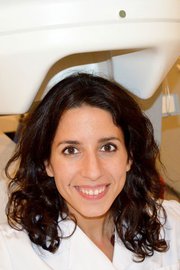 Dr. Guiomar Niso is a Postdoctoral Researcher working at the Universidad Politécnica de Madrid (UPM). She holds an MSc in Telecommunications Engineering (ETSIT-UPM, 2003-2008), MSc in Bioengineering and Telemedicine (UPM, 2008-2009) and a PhD in Biomedical Engineering (UPM, 2008-2013). From 2013–2016, she moved to Canada, as a Postdoctoral Fellow at the Montreal Neurological Institute, McGill University. There Dr. Niso contributed outstanding brain-imaging advances and led the efforts in many open science international initiatives: pioneering open software & open data repositories & open standards to store, organise, process and share electrophysiological data, with profound impact on the community. She founded HERMES, a free open-source software package for the analysis of functional brain connectivity (Niso et al. 2013) and contributes to Brainstorm, a collaborative, open-source application dedicated to the analysis of brain recordings (Niso et al. 2019). She also premiered the concept of open-access repositories for MEG with the Open MEG Archives (OMEGA, Niso et al. 2016). And lead the effort to develop the MEG-BIDS: the first common standard for organizing, describing and sharing MEG neuroimaging data (Brain Imaging Data Structure, Niso et al. 2018). On the clinical front, she performed major contributions in neurological conditions (e.g. Epilepsy: Niso et al. 2015, Niso 2019). Her leadership in neuroimaging and engineering has been recognized by multiple grants and awards, highlighting the AXA Postdoctoral Fellowship received in 2017 to find early indications of Alzheimer’s Disease for better therapeutic interventions.
Dr. Guiomar Niso is a Postdoctoral Researcher working at the Universidad Politécnica de Madrid (UPM). She holds an MSc in Telecommunications Engineering (ETSIT-UPM, 2003-2008), MSc in Bioengineering and Telemedicine (UPM, 2008-2009) and a PhD in Biomedical Engineering (UPM, 2008-2013). From 2013–2016, she moved to Canada, as a Postdoctoral Fellow at the Montreal Neurological Institute, McGill University. There Dr. Niso contributed outstanding brain-imaging advances and led the efforts in many open science international initiatives: pioneering open software & open data repositories & open standards to store, organise, process and share electrophysiological data, with profound impact on the community. She founded HERMES, a free open-source software package for the analysis of functional brain connectivity (Niso et al. 2013) and contributes to Brainstorm, a collaborative, open-source application dedicated to the analysis of brain recordings (Niso et al. 2019). She also premiered the concept of open-access repositories for MEG with the Open MEG Archives (OMEGA, Niso et al. 2016). And lead the effort to develop the MEG-BIDS: the first common standard for organizing, describing and sharing MEG neuroimaging data (Brain Imaging Data Structure, Niso et al. 2018). On the clinical front, she performed major contributions in neurological conditions (e.g. Epilepsy: Niso et al. 2015, Niso 2019). Her leadership in neuroimaging and engineering has been recognized by multiple grants and awards, highlighting the AXA Postdoctoral Fellowship received in 2017 to find early indications of Alzheimer’s Disease for better therapeutic interventions.
Lecture title: From the origins of M/EEG signals to the study of brain dynamics and time-resolved brain mapping
Our brains contain around 80.000 million neurons, each of which makes close to 1000 synaptic connections with the others. This rich environment provides the fundamental substrate for neuronal ensembles to become transiently synchronized, giving rise to cognitive functions such as perception, learning or thinking. Understanding these brain dynamic complex networks through neuroimaging data represents one of the biggest challenges for systems neuroscience. Magnetoencephalography (MEG) and electroencephalography (EEG) are two non-invasive techniques with unrivalled temporal resolution capable of measuring the electromagnetic fields generated by the underlying neural assemblies. In this talk I will explain what are the origins of these fast brain signals, and how we are able to capture them and study time-resolved brain mapping. I will show how this oscillatory brain activity may provide translational biomarkers of healthy states and potential diseases, such as epilepsy or Alzheimer's Disease, when it becomes altered. To finalize, I will present some open tools that facilitate electrophysiological data analysis, and open resources to organize, obtain and share neuroimaging data.
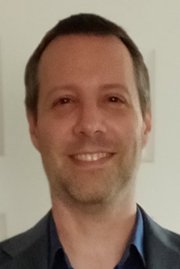 Andrew Rowley is a Senior Research Software Engineer working at the University of Manchester in the UK, where he has been part of the SpiNNaker software development team since 2014, taking the role early in the Ramp-Up Phase of the Human Brain Project. Andrew graduated from St. Andrews University with a BSc in Computer Science and Physics and a PhD in Computer Science studying Artificial Intelligence. He then joined the University of Manchester as a Software Engineer in 2009, before working as a Senior Software Engineer at the National Centre for Text Mining also in the University. His work is in leading the SpiNNaker software team in the development of all parts of the software, including the low-level light-weight “operating system”, the SpiNNaker C code that compiles into instruction code that runs on the machine, the Python and Java code that translates user scripts into executable networks, and the software that allows users to access the machine remotely. He also likes to help researchers execute their neural network simulations on SpiNNaker, and has been involved in various tasks to this end, including the first verified execution of a cortical microcircuit on a neuromorphic platform.
Andrew Rowley is a Senior Research Software Engineer working at the University of Manchester in the UK, where he has been part of the SpiNNaker software development team since 2014, taking the role early in the Ramp-Up Phase of the Human Brain Project. Andrew graduated from St. Andrews University with a BSc in Computer Science and Physics and a PhD in Computer Science studying Artificial Intelligence. He then joined the University of Manchester as a Software Engineer in 2009, before working as a Senior Software Engineer at the National Centre for Text Mining also in the University. His work is in leading the SpiNNaker software team in the development of all parts of the software, including the low-level light-weight “operating system”, the SpiNNaker C code that compiles into instruction code that runs on the machine, the Python and Java code that translates user scripts into executable networks, and the software that allows users to access the machine remotely. He also likes to help researchers execute their neural network simulations on SpiNNaker, and has been involved in various tasks to this end, including the first verified execution of a cortical microcircuit on a neuromorphic platform.
Lecture title: The SpiNNaker Platform
SpiNNaker is a massively parallel low power supercomputer designed to model large spiking neural networks in real time, and consists of 1 million ARM cores, each with a low instructional memory (ITCM) limit of 32K. The architectural design of the machine lends itself easily to the simulation of spiking neural networks due to its ability to send and route multiple small messages from any point on the machine to multiple other points simultaneously. It has also been used for other massively-parallel non-neural simulations, and has applications in real-time robotics. This talk will introduce the machine, and will then discuss some of the different applications that can be run on the machine, including the link-up with the EU Human Brain Project's Neurorobotics Platform. I will also discuss how users can access the platform both as an introductory user getting to know the platform and for running larger jobs that might take longer to complete.
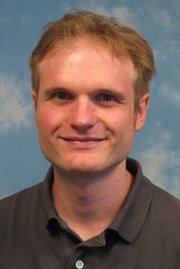 In his research, Tilo Schwalger wants to gain a theoretical understanding of how sensations, thoughts and actions emerge from the complex interactions of millions of nerve cells in the brain. Towards that goal, he develops new theoretical methods to bridge different scales in the brain, from the microscopic level of spiking neurons to the mesoscopic level of neuronal populations all the way to the macroscopic level of large-scale brain activity.
In his research, Tilo Schwalger wants to gain a theoretical understanding of how sensations, thoughts and actions emerge from the complex interactions of millions of nerve cells in the brain. Towards that goal, he develops new theoretical methods to bridge different scales in the brain, from the microscopic level of spiking neurons to the mesoscopic level of neuronal populations all the way to the macroscopic level of large-scale brain activity.
For this multiscale approach, he uses mathematical tools from statistical physics, stochastic processes and nonlinear dynamics, such as mean-field theory, coarse-graining and dimensionality reduction techniques. His group's theoretical framework enables them to better understand neural variability in cortical circuits in terms of their biophysical mechanisms and their functional role for information processing.
Research topics include:
|
Lecture title: Mean-field models derived from biologically realistic neuronal dynamics
Heuristic firing-rate (FR) models are widely used for modelling and analysing computations and dynamics of neural populations. Despite their success, classical firing-rate models do not capture important features emerging from the rich neuronal dynamics at the microscopic scale. Examples include oscillatory transients of population activities, spike synchronisation, resonance phenomena and intrinsically generated variability. Moreover, heuristic FR models lack a clear link to biophysical parameters. A powerful approach to understand the effect of single neuron dynamics on the population activity is mean-field theory. It is a persistent challenge, however, to adapt mean-field theories to biologicallly realistic features such as finite network size, multi-dimensional neuronal dynamics, short-term plasticity and the high degree of heterogeneity.
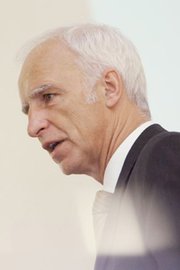
Dieter Sturma currently works as Professor of philosophy with special regard to ethics in the life sciences at the University of Bonn. He is the Director of the Institute of Science and Ethics (IWE), the Director of the German Reference Centre for Ethics in the Life Sciences (DRZE) as well as the Director at the Institute for Ethics in the Neurosciences (IMM-8) at Forschungszentrum Jülich.
Lecture title: Ethics in the neurosciences
The lecture starts with providing comprehensive overviews of “Ethics and Applied Ethics”. Ethics will be introduced as the scientific discipline concerned with moral problems. Approaches and methods will be presented which have been developed over the past years for framing and discussing ethical issues which arise in science in general as well as in the context of current neuroscientific research in particular.
Lecture title: The virtual epileptic patient (VEP): Taking neuroscience to clinical trials
Bio and abstract to follow soon.
ORGANISERS
Egidio Falotico | Scuola Superiore Sant'Anna
Federica Radici | Scuola Superiore Sant'Anna
Theresa Rass | Medical University Innsbruck
Laura Saxer | Medical University Innsbruck
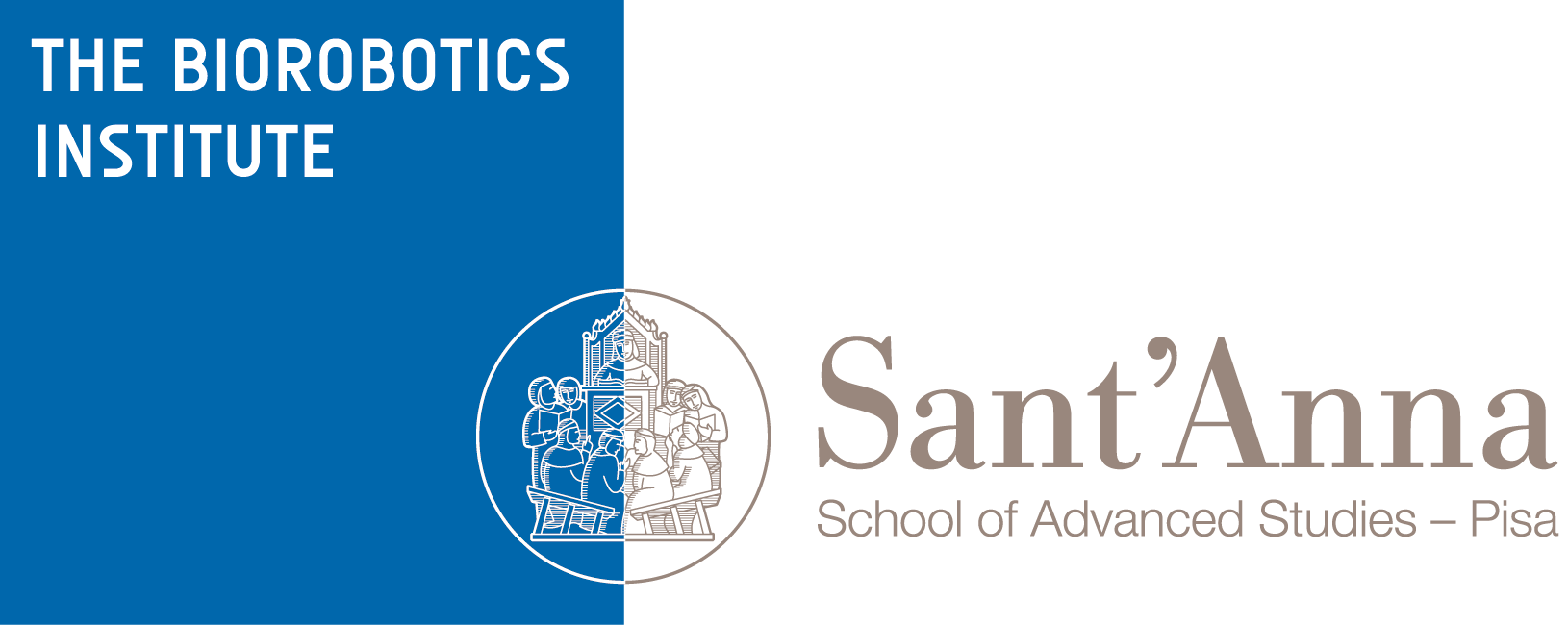
PROGRAMME COMMITTEE
Chairs:
Sandra Diaz | Forschungszentrum Jülich
Gabriel Urbain | Ghent University
Committee:
Carmen Alina Lupascu | Italian National Research Council
Luca Peres | University of Manchester
Marta Turégano | Universidad Politécnica de Madrid
Alexander van Meegen | Forschungszentrum Jülich
Alper Yegenoglu | Forschungszentrum Jülich
ABOUT THE VENUE
SANT’ANNA MAIN CAMPUS
CONVENT AND CLOISTER OF ST. GEROLAMO
Piazza martiri della libertà, 33
56127 Pisa PI
Italy

